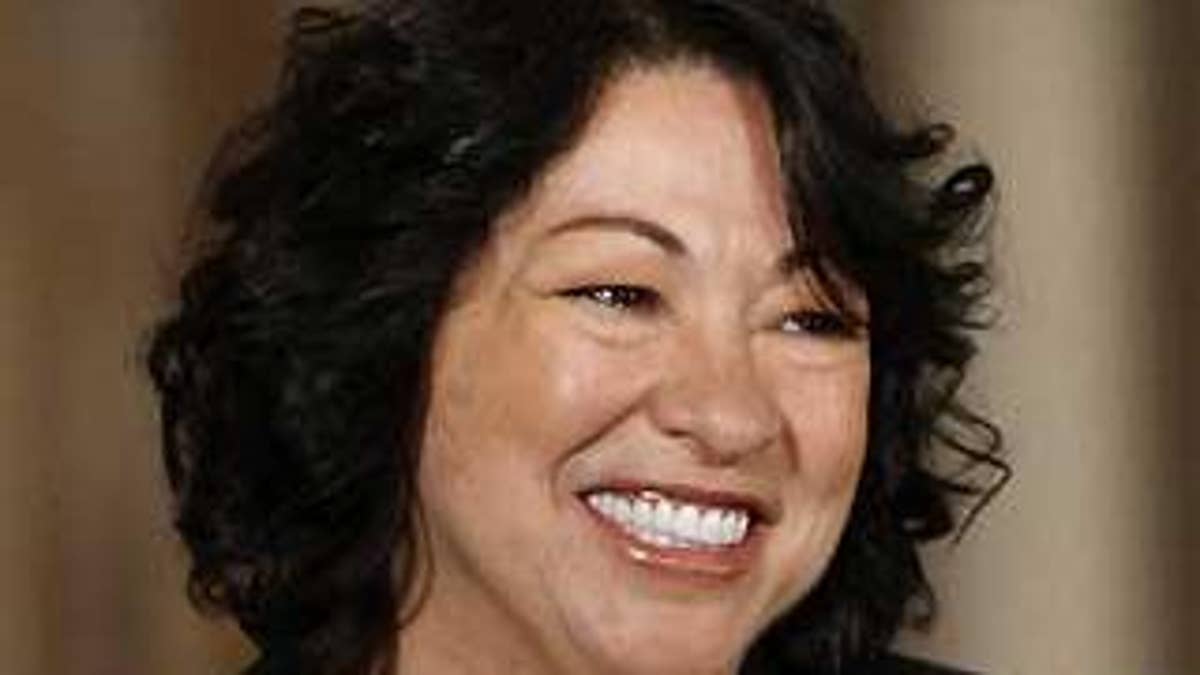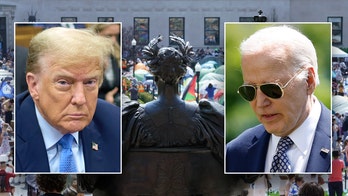
More than a decade before New Haven, Connecticut firefighter Frank Ricci and 20 colleagues had their case before Judge Sonia Sotomayor's court, a newly released video reveals that she spoke at length about some of the racial issues central to that case and gives clues to the reasons that may have been behind her reasoning to vote against the men who claimed reverse-discrimination.
It is this case, Ricci v. DeStefano, more so than any of the thousands of rulings in Sotomayor's 17 years on the federal bench that has become the legal focal point of her forthcoming confirmation hearing to replace Justice David Souter on the Supreme Court.
The new video which dates to the early 1990's shows a wide-ranging discussion of legal and social issues. It was part of Sotomayor's submission of documents and videos to the Senate Judiciary Committee for examination and scrutiny by the senators who will ultimately pass judgment on her.
At the time of the video, Sotomayor was a newly-installed trial court judge and she discussed her role on the bench and how her life as a Hispanic woman shaped her duties as a judge particularly when presiding over minority defendants. "I think it brings to the system more of a sense of fairness when these litigants see people like myself on the bench," Sotomayor said.
What remains under dispute is the extent to which that sense of fairness extended to people like Ricci and his fellow firefighters/plaintiffs who (along with one Hispanic) are all white and were appearing before Sotomayor and two other judges on the U.S. Second Circuit Court of Appeals. In a case that was heard last year, the firefighters were seeking relief from a decision to set aside their promotion exam test scores because no black applicants did well enough to merit advancement. New Haven city leaders, fearing a civil rights lawsuit from its black community did away with all of the test scores and promoted no one.
The question of earned achievement was something Sotomayor discussed in the early 1990's interview. "I have difficulty defining merit and what merit alone means and in any context whether it is judicial or otherwise, I accept that different experiences in and of itself bring merit to the system," she said.
In a controversial decision at the time and since, Sotomayor and her fellow judges perfunctorily rejected the firefighters' claims and affirmed the decision of a lower court. Other judges on the Second Circuit that were not part of the case, led by Sotomayor's judicial mentor, sought to hear it again in front of the entire court. But that effort narrowly failed.
In his dissent, Judge Jose Cabranes (like Sotomayor, appointed to the New York-based court by Bill Clinton) excoriated the initial one paragraph decision and called on the Supreme Court to take the case.
In April, the firefighters had their case heard by the high court and a decision is expected in the next couple of weeks. Invariably, the Court's ruling, either way, will be viewed as judgment on Sotomayor's jurisprudence.
Her supporters have noted that she was not the senior judge hearing the case and that the short opinion was in line with standard Second Circuit practices. Also, Sotomayor's vote was not the difference-maker in the case as she was joined by two other judges who voted for the same result -- making it a unanimous ruling against the firefighters.
Sotomayor's detractors argue she and her fellow judges gave short shrift to the serious constitutional and social issues presented in this racially charged case.
Sotomayor is unquestionably proud of her Puerto Rican heritage. She has spoken often about her familial roots and how her life experiences have shaped her world view. It is of course this view that has generated so much controversy when she has repeatedly suggested over the years that a wise Latina woman can make a more informed legal judgment than others.
In the most publicized instance, a 2001 speech at the Univ. of California, Berkeley Law School, she said she hoped that "a wise Latina woman with the richness of her experiences would more often than not reach a better conclusion than a white male who hasn't lived that life." President Obama has said she would have used different words on that occasion, but the White House hasn't been as definitive in explaining or clarifying her repeated use of this idea.
Sotomayor acknowledged in this new video that she pays close attention to minority and gender issues including studies about what impact, if any, such factors play into a fair judiciary. "I do follow them carefully." She undeniably agreed with the proposition that it is important to promote diversity in the legal system. "These are important statements about our society and about its values," she said. "And they're important to the people who participate in the system."
Sotomayor also freely admitted that she is where she is today because of affirmative action. "I am the perfect affirmative action baby," who acknowledged that she was able to secure advancement in life, in part because of her background and despite test scores that were not at the range usually found from students at Princeton or Yale Law School. Nonetheless, by all accounts she excelled at each school and certainly took full advantage of the opportunities she received.
In regards to those test results, she said her poor scores were due in part to the "cultural biases built into testing" and how "that's been shown by statistics" to be the case. Today there are laws preventing the use of such tests that are not "race neutral." And that's a core issue to the Ricci case. The firefighters cite evidence supporting to say the test was sound and its results should have been honored while New Haven claims otherwise.
Sotomayor's ruling gives us no specific guidance on how she viewed the fairness of the test or under what circumstances she would have ruled in favor of men like Frank Ricci.




